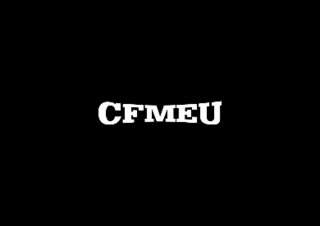Related Research Articles
The 1913 Australian referendum was held on 31 May 1913. It contained six referendum questions and was held in conjunction with the 1913 federal election.
The Australian Workers' Union (AWU) is one of Australia's largest and oldest trade unions. It traces its origins to unions founded in the pastoral and mining industries in the late 1880s and it currently has approximately 80,000 members.
The Queensland Council of Unions (QCU) is the peak body representing trade union organisations in Queensland, Australia.

The Australian Services Union is a trade union representing workers in a variety of industries.

The Construction, Forestry and Maritime Employees Union (CFMEU) is Australia's largest union in the construction, forestry, maritime, textile, clothing and footwear production industries.

The Modern Records Centre (MRC) is the specialist archive service of the University of Warwick in Coventry, England, located adjacent to the Central Campus Library. It was established in October 1973 and holds the world's largest archive collection on British industrial relations, as well as archives relating to many other aspects of British social, political and economic history.

The Federated Miscellaneous Workers' Union was an Australian trade union from 1915 to 1992. It represented an extremely diverse and disparate range of occupations, but its core support came from workers employed in cleaning and security services. The union merged with the Federated Liquor and Allied Industries Employees' Union of Australia to form United Voice in 1992.
Marine Cooks, Bakers and Butchers' Association of Australasia was an Australian trade union. It was formed in Melbourne in August 1907 as a breakaway group from the Federated Stewards and Cooks' Union of Australia and was registered under the Commonwealth Conciliation and Arbitration Act 1904 in January 1908 and affiliated with the Trades and Labour Council in April 1908. The Association represented workers employed as cooks, bakers, butchers and other food preparation roles aboard ships in Australia and New Zealand. In November 1908 Mr Justice Higgins issued a judgement on rates of pay and hours for marine cooks in a case involving the Association and the Commonwealth Steamship Owners' Association. The Association moved its Head Office moved from Melbourne to Sydney in January 1915.
Manufacturing Grocers' Employees' Federation of Australia (M.G.U.) was an Australian trade union existing between 1906 and 1988. The union was first established as the Federated Candle, Soap, Soda & Starch Employees' Union of Australia, before changing its name in 1914. The union represented workers employed in manufacturing grocers' sundries and non-edible grocery products, particularly in the southern states of South Australia and Victoria. In 1988 the union amalgamated with the Federated Millers and Mill Employees' Union to form the Federated Millers and Manufacturing Grocers Employees' Association of Australia, which in turn merged with a number of unions to form the National Union of Workers.
The Federated Millers and Mill Employees' Association of Australasia (MEA) was an Australian trade union which existed between 1911 and 1988. The union represented workers employed in milling grain.
The Federated Liquor and Allied Industries Employees' Union of Australia (FLAIEU) was an Australian trade union from 1910 to 1992. It represented workers employed in hospitality, catering, breweries and alcohol retailing. The union merged with the Federated Miscellaneous Workers' Union of Australia to form United Voice in 1992.
The Australian Leather and Allied Trades Employees' Federation (ALATEF) was an Australian trade union that existed between 1945 and 1970. It represented workers employed in the preparation of leather from hides, and the manufacture of a variety of leather and canvas goods.

The Federated Ironworkers' Association of Australia (FIA) was an Australian trade union which existed between 1911 and 1991. It represented labourers and semi-skilled workers employed in the steel industry and ironworking, and later also the chemical industry.
Railway Unions in Australia organised labour of railway employees in Australia operated under federal and State awards - this is a partial list of known unions. Many of the unions amalgamated over time, creating a complex trail of ancestry for some of the later unions.
The Australian Federated Union of Locomotive Employees (AFULE) is an Australian trade union representing railway workers. It was formerly a national union which largely merged into the Australian Rail Tram and Bus Industry Union in 1992; however, the Queensland division continued as a separate union active only in that state.
The Australian Coal and Shale Employees' Federation was an Australian trade union representing workers in the coal mining industry from 1913 to 1990.
The Australian Telecommunications Employees' Association (ATEA) was an Australian trade union representing technical and trades employees in the telecommunications industry from 1912 to 1992. Its members were primarily employed by the Postmaster-General's Department, the Australian Broadcasting Control Board and the Department of Posts and Telecommunications.
The Australian Postal and Telecommunications Union (APTU) was an Australian trade union which represented a wide range of employees in the postal and telecommunication industries, including postmen, postal and mail officers, delivery drivers, storemen, linesmen and telegram messengers. It was founded in 1925 and merged into the Communication Workers Union of Australia (CWU) in 1992.
References
- ↑ "Find a registered organisation". Fair Work Commission. Retrieved 29 July 2023.